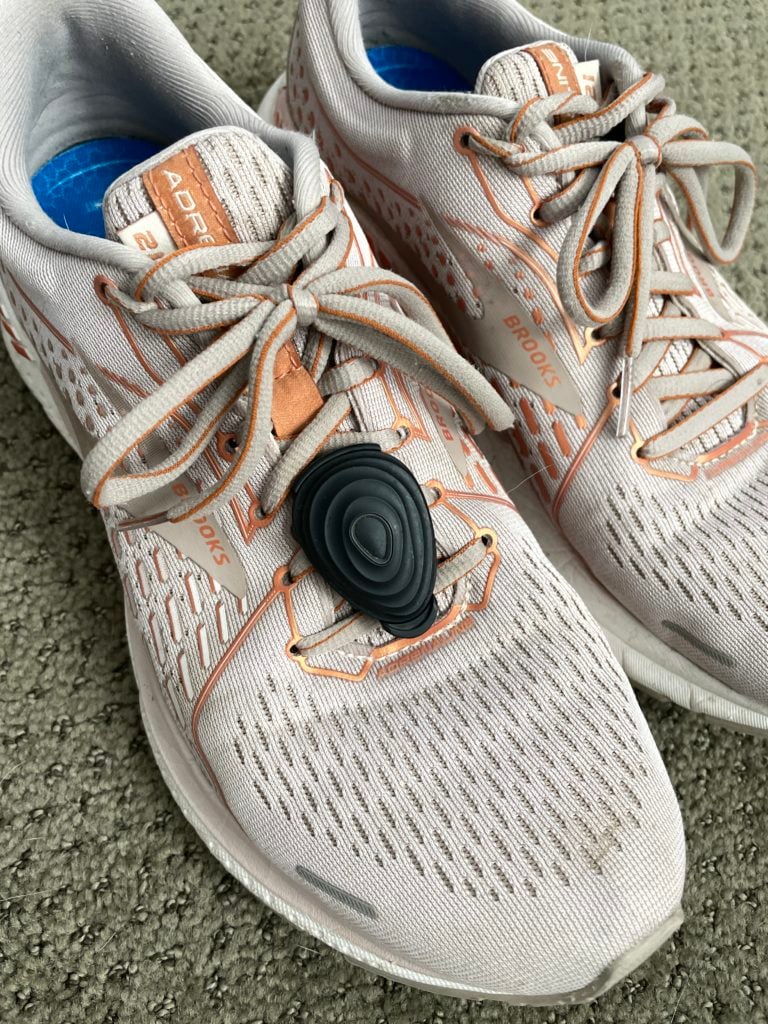How do you capture personalized running metrics without a heart rate monitor?
You measure Power output. A popular metric with cyclists, runners can now dial in their running efficiency using the Stryd Pod, a small device that can help determine accurate race day predictions.

What is the Stryd pod? This small device clips onto your shoe to measure your power, cadence and real distance. It will also show power against windy conditions and elevation changes. This foot pod can measure real distance in situations where GPS is not available. In those cases, the Stryd Pod will more accurately measure the distance your foot is traveling in a given step and provide a more accurate pace and distance. This feature is helpful in GPS dead zones, like among high-rise buildings, deep canyons, or heavy wooded canopy.
What does this device (and the data derived from it) claim to do? The Stryd Website says when you use the Pod regularly during training, you may be able to accurately predict race day performance based on your power readings. The companion app measures progress over time, and will automatically adjust your Threshold Power — the capacity you can hold for 60 minutes. You can also track your running “stress score” so you can train smarter, not harder.
What is in the data? Power efforts are broken down by zones, similar to Heart Rate Threshold Zones. Here are a few of the data points that you’ll see during a run.
- Power in Watts — the higher the number in watts, the stronger the stride.
- Cadence in rpms — the number of steps one foot makes in a minute.
- Ground Contact time — how long your foot is on the ground during the step — the shorter the time, the faster you’re going
- Vertical Oscillation in Centimeters — How far off the ground my foot travels mid stride. This metric shows up in Garmin Connect as measured from the foot pod.
- Leg Spring Stiffness in KN/M — Measures elastic energy in the leg and is an indication of leg strength.
There are several other metrics that show up between Garmin Connect and the Stryd app, so it creates a lot of data points.
I have used the Stryd Pod consistently now for over 9 months and across several types of runs: Base Building, a threshold test, Tempo and Interval runs both outside and on the treadmill, and three race efforts.
Cons: I am not very tech savvy, and I had a lot of trouble getting it connected to the app and to my Garmin, and I did not find it very intuitive out of the box. When I finally got all of it connected and started using it, the data return felt foreign and confusing, and I was not sure what to make of all of it. The app and the information in it is pretty technical. It took some digging to understand what a lot of these terms mean, and I cannot imagine a lot of Novice, or even more experienced runners will know what all of it means right away.
PROS: When I took the time to dig into the information, I was pleased with how much information was available, even though most of it is beyond what I would use for my own training. I do like that I am getting more accurate distance information on the treadmill, even though my overall pace on the treadmill reads much slower (which is probably more accurate). So it is that GPS compensation feature that is useful in the winter when I am spending a lot more time on the treadmill. It is extremely lightweight. I do not feel it on my foot at all. It holds a charge for more than 20 hours of running. The amount of data is more than I really will ever use, and that is a positive. It allows me to grow into the information should I choose to make a deeper dive.
One of the best features I had found was how accurate the Race Pace Predictions were. For all three of my Race efforts, the Stryd data accurately predicted with a plus/minus margin how I would fare on all three. However, those predictions are based on data gathered from your 90 day running history. If you have not done a hard effort in that time, your predictions may be off.
How much does it cost? The pod itself is $219 and comes with a one year warranty. The companion app is free with a membership upgrade option. That membership upgrade includes things like power based training plans, workout builders and libraries, and other deeper data analysis. This review is based only on the Free membership.
Is the Stryd Pod itself and the entry level information worth that price? For someone like me, who likes having the data even if I do not use all of it all the time, yeah, I think it is worth it. If you want to find a metric to improve performance, but are not ready for Heart Rate Training, this may be a good device for you. A Galloway runner applying the Run Walk Run method would get a lot out of this as a measurement of how hard your body is working from moment to moment, since other data methods like heart rate don’t work as well. If you are a data nerd that really likes to squeeze as much information out of their runs as possible to compare performance and find ways to improve, this is probably something you want in your arsenal. But if you are just starting out as a runner, I would invest in a good GPS device, good shoes, and other running specific things before spending your money on this.
The bottom line is that this is a pricey little bit of equipment that throws a lot of information at you. If you like data and really crunch numbers, this is a great little device that helps you accurately determine your race day performance.
Disclaimer: This review is based solely on my experience. I purchased this device at full price, and the thoughts and opinions in this article are solely my own.
